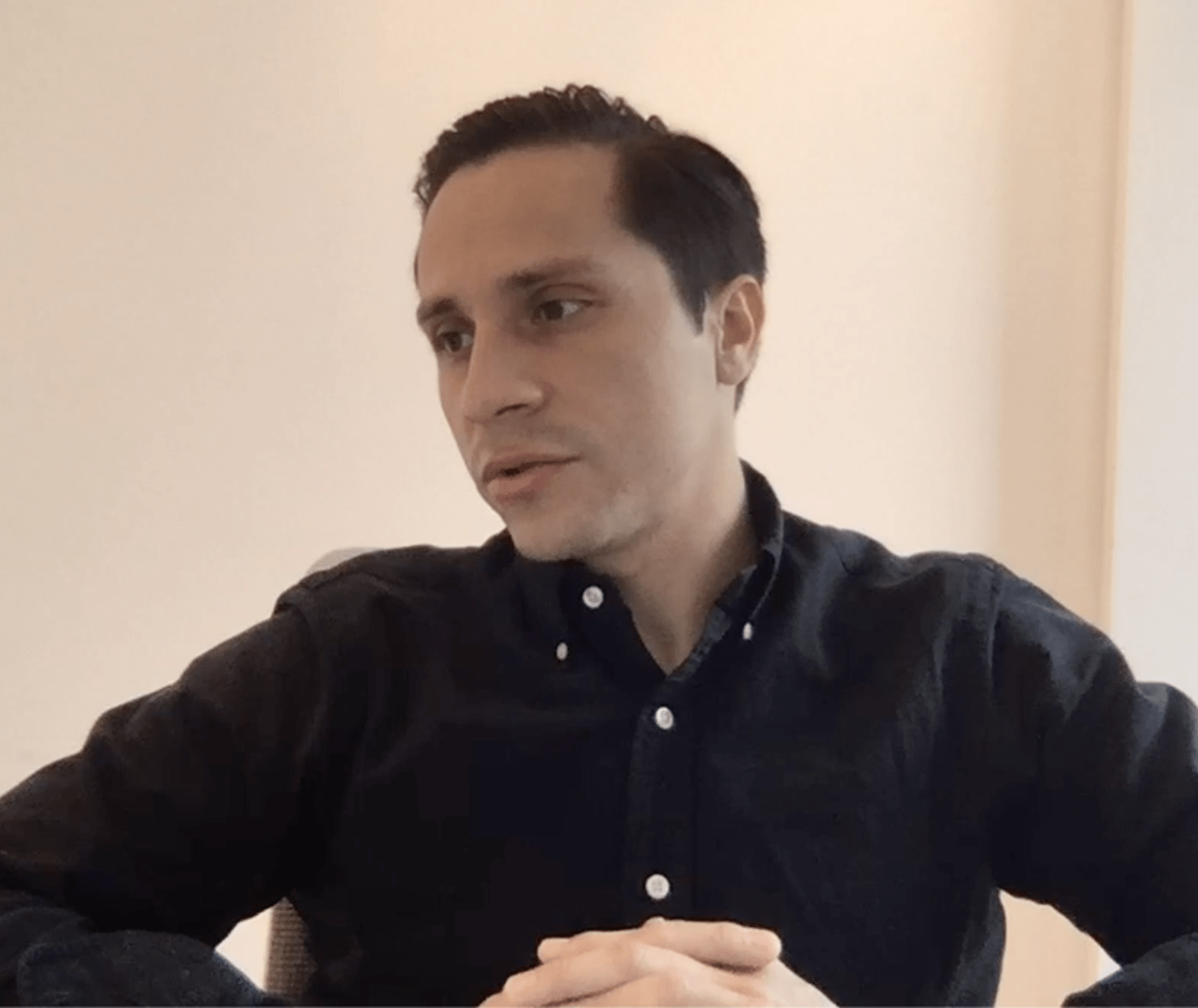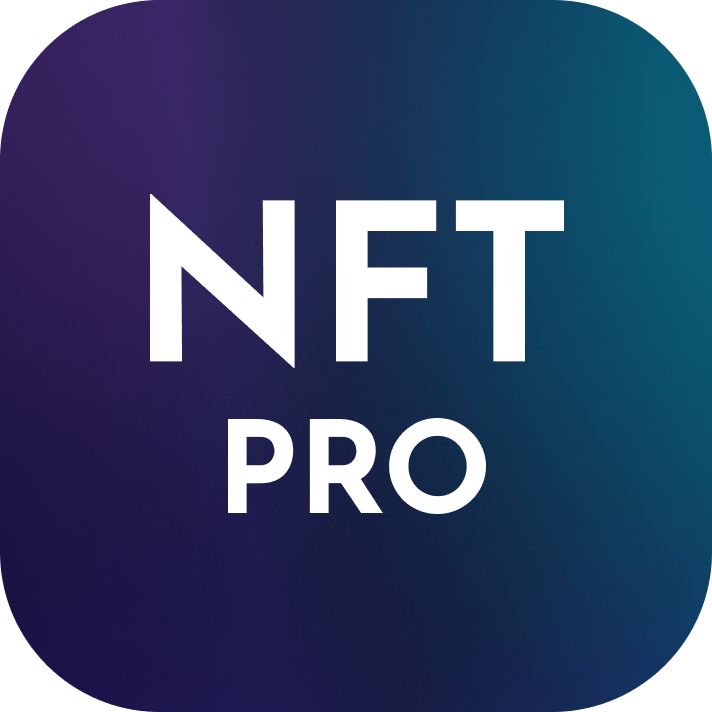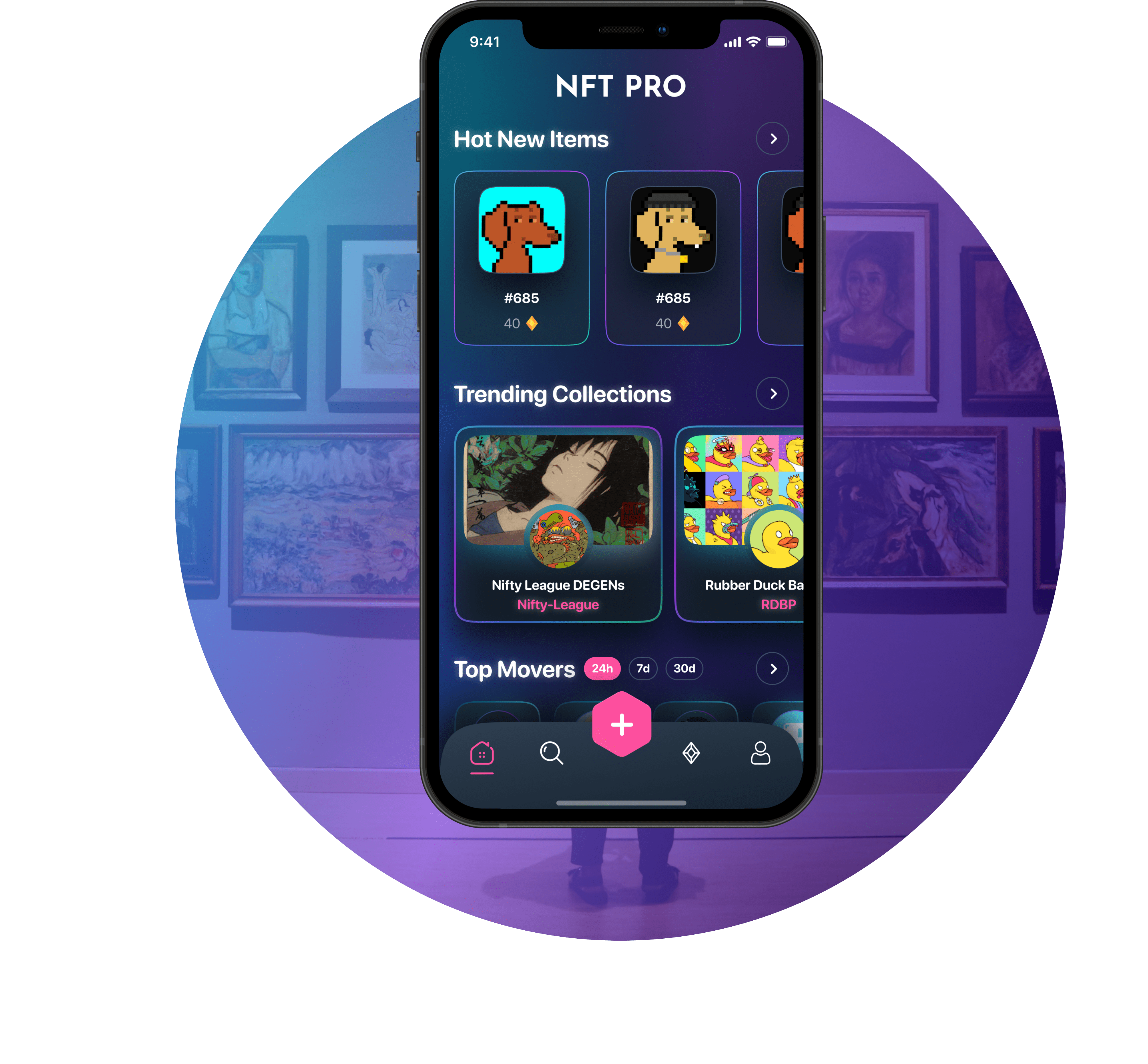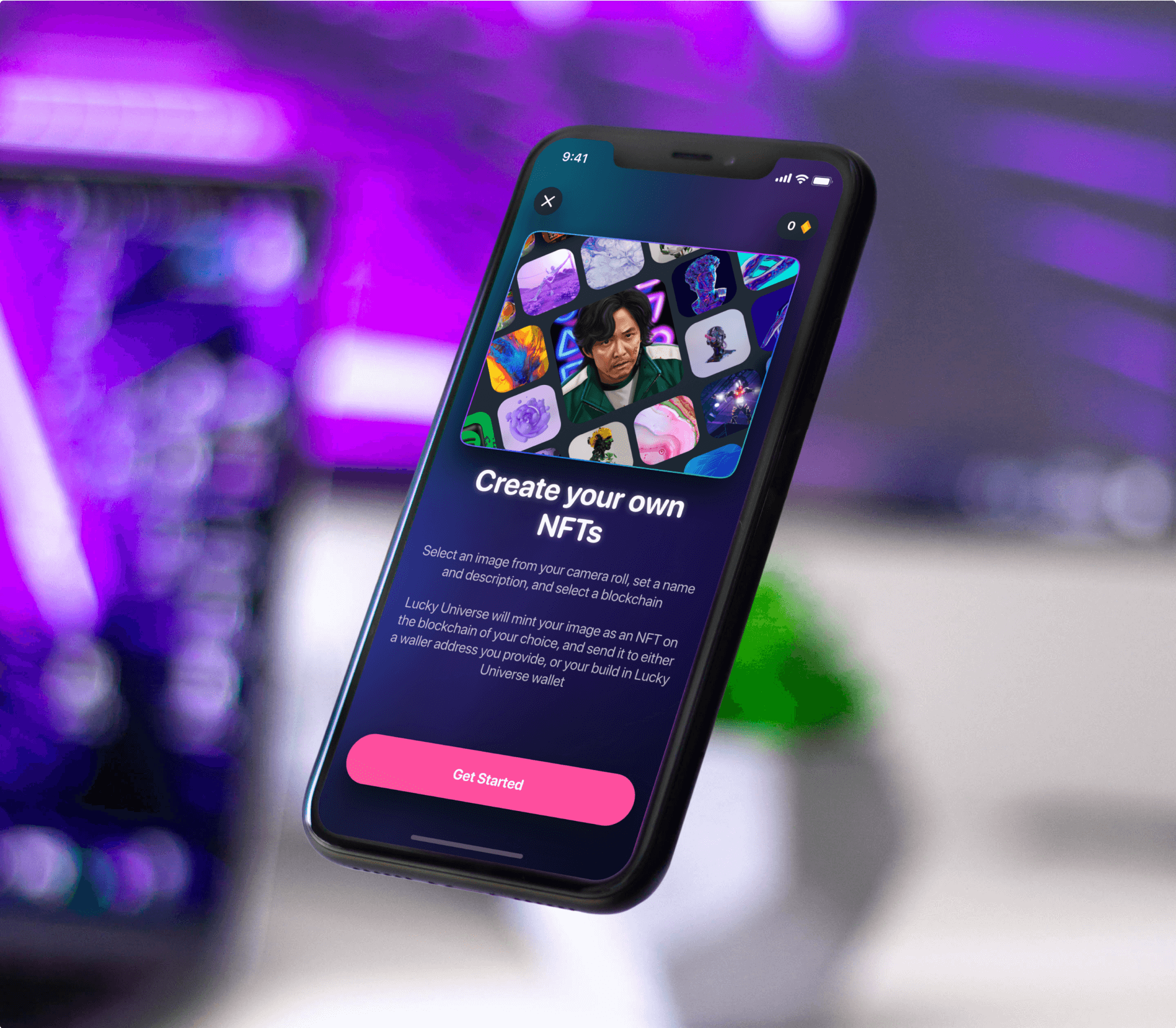От халепа... Ця сторінка ще не має українського перекладу, але ми вже над цим працюємо!

От халепа... Ця сторінка ще не має українського перекладу, але ми вже над цим працюємо!

NFT Pro+ is a project from a startup in the blockchain industry. The goal is for it to become one of the largest NFT marketplaces in the mobile segment, enabling users to create, sell, and buy NFTs (non-fungible tokens) from their mobile devices. NFT Pro+ will allow users to publish NFTs directly to all significant blockchains, including Ethereum Mainnet and Polygon networks.
We were already working on projects with the client for several years when they requested that we work on blockchain mobile development for them. The new project aimed to expand their business to Web3 (the next Web iteration, in which blockchain will play a significant role). The client chose NERDZ LAB as their reliable partner to quickly build a blockchain-based MVP while their company focused on diving into the world of Web3 technology.

Services
Mobile development
iOS
Technologies:
Kotlin
Node.js
Laravel Nova
In-app purchasing (IAP)
Web3
Blockchain
Team composition:
1 iOS developer
1 Back-end developer
1 QA engineer
1 Delivery
1 Project manager
Reliable algorithm
NERDZ LAB had to build a script for NFT-minting. One of the critical aspects of this was keeping the fee for the mint process (in other words, transactions in the blockchain) as low as possible.
Time constraints
NERDZ LAB had only six weeks to build a blockchain-based MVP of the platform and to create and successfully integrate a minting script with the mobile app infrastructure.
Sustainable connection
We needed to connect with OpenSea, the largest NFT marketplace, to populate our app with all public NFTs worldwide. This integration would make it possible to buy and sell those NFTs directly in the app.
The biggest trick here was that OpenSea’s API has a whole lot of restrictions, including an extremely low rate limit. The rate limit directly affects how frequently our platform would be able to communicate with the OpenSea marketplace.

Custom engineering approach
Our team researched best practices for building an NFT minting script that would allow users to make transactions in the blockchain. We then extended the functionality of the future platform by adding tracking of transaction fees (also known as gas fees). Our development approach ensured that our client could mint NFTs with the lowest possible fees.
Wise tool choices
We encapsulated a Node.js server that we designed for performing blockchain-related functionality. That server lets us establish a viable communication process between Node.js and PHP servers. In addition, we used some blockchain mobile development approaches. All combined allowed us to significantly decrease the time to build the blockchain-based MVP and the necessary integrations.
Additional API configuration
To avoid massive delays that might occur with direct and continuous OpenSea API usage, we built an NFT metadata database for the platform. To makes sure the database was always up-to-date, we created a communication level with a subscription to OpenSea API updates. In addition, to make up for OpenSea API’s low rate limit, we built a function to control and postpone extra tasks from entering the queue.
The object of the design part for the blockchain mobile development was to overview the NFT market in the short term, create a concept based on client requirements and provide a design solution for it.
The NFT marketplace concept brief that we received from the client detailed their functional needs and described what we could possibly reuse from previous apps we’d delivered to them.
Over several meetings after receiving the initial brief, we discussed the client’s vision for the product, including what would make it stand out in the market and how to resolve users’ pain points.
After completing our research, we developed the UI, delivering a UI kit first so we could rapidly develop flow by flow. Because we had to deliver the MVP quickly, we skipped the wireframing step but without sacrificing quality.
With each flow we delivered, we checked the animation deliverables. We tested the NFT marketplace app on a prototype to verify that we’d built in all the needed functions and to find any possible problems on the client side.
Upon completing the design phase, designers and developers had several meetings to share knowledge and check for any missing states or cases.
Conduct Discovery and Research
We developed an understanding of the functions the client needed in the app, researched what solutions the market already offered for users’ pain points, and developed a concept of how our NFT marketplace app would stand out among competitors.
Build information architecture
This stage involved building a quick schema for the mobile app to verify and get approval for app functions and the items we would deliver.
Design and prototype UI/UX
We created visual representations of the app and livened them up in terms of design.
Share knowledge
At this stage, we verified that all items were correctly described in our brief meetings for further mobile development and whether any gaps existed.
A secure algorithm for low-fee NFT-minting
A blockchain MVP delivered on time with all critical functionality
Stable and reliable API integration for the NFT marketplace